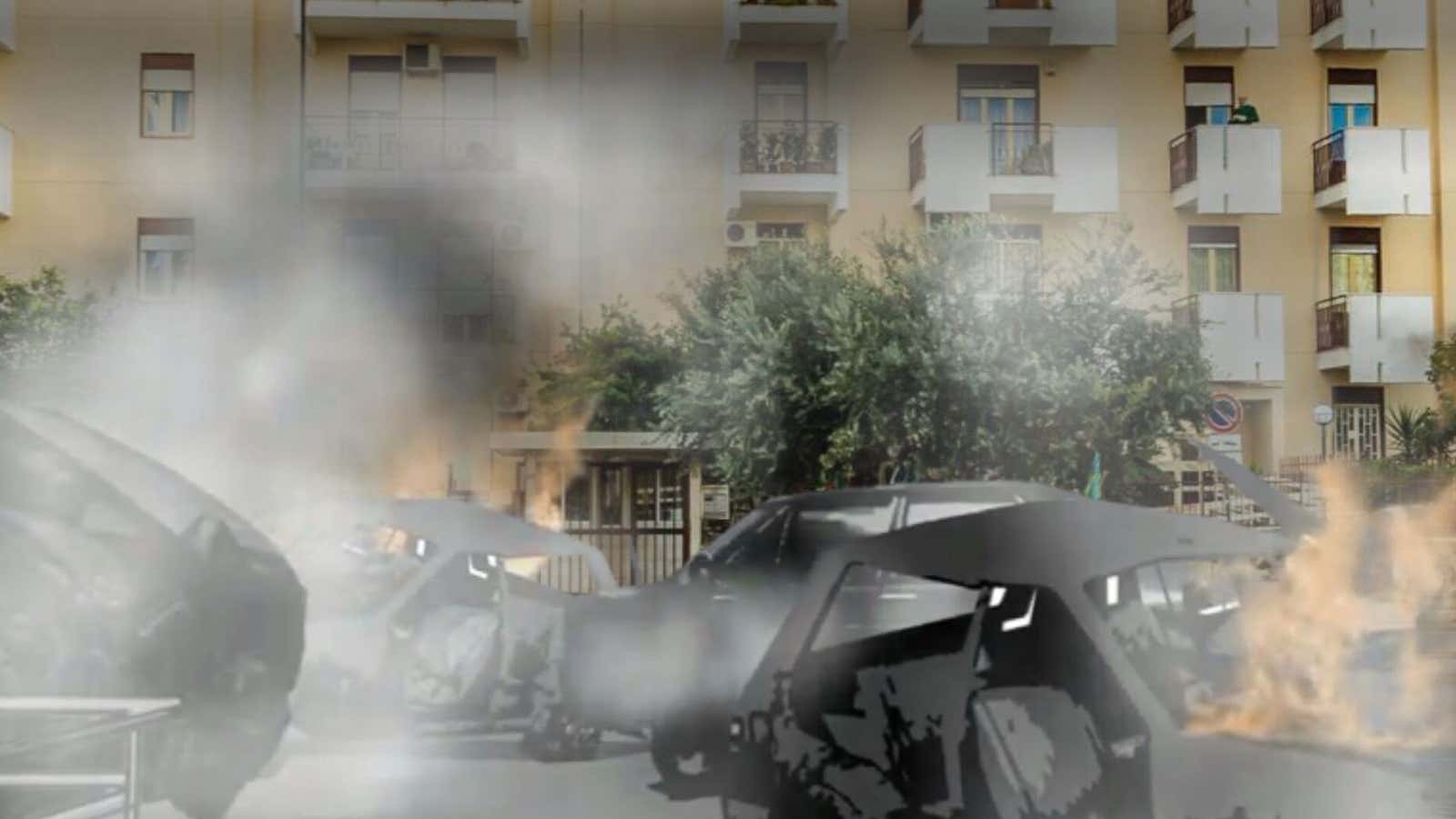In 1992, Italian anti-mafia judges Paolo Borsellino and Giovanni Falcone were killed by car bombs in Sicily’s capital, Palermo. Falcone was driving on the airport highway when a TNT blast disintegrated his vehicle and part of the road, sending shards of pavement flying through the air. Today, a monument to his memory stands on the exact spot of the explosion.
Mafia aficionados can relive this moment with mobile app NOma, short for “No Mafia places and stories” (link in Italian). Available for iOs and Android devices, NOma offers users a guide through famous mafia showdowns, including animations and historical documents, while also highlighting current businesses that have pushed back on mafia overtures. It’s part Discovery Channel, part The Godfather, and part Yelp. Financed by its founders and launched earlier this year, NOma has since been sponsored by Italy’s largest telecom operator, state TV Rai, local authorities, and several deputies and senators in parliament.
The app was created by a group called Sulle Nostre Gambe—”On our own legs”—founded by four Italian activists, two of whom are daughters of mafia victims. Roberta Iannì’s father was a hotel owner who fought against and was killed by padrinos, and Emanuela Giuliano’s father was a Palermo police chief who was shot by the mafia. The other two members of the group—architect Tiziano di Cara, who designed the app, and writer Pierfrancesco Diliberto—are locals who have dedicated their lives to fighting the mob.
NOma features 22 storylines, narrated (English subtitles available) alongisde historical documents, cartoons, digital animations, and interviews with relatives and friends of victims. What emerges are minute-by-minute reconstructions of tragic events—for example, the hellish morning in 1979 when police chief Giorgio Boris Giuliano, Emanuela’s father, was shot in the back while grabbing an espresso and cream cornetto (Italian style sweet croissant) on the way to work.
The narrators are all Sicilian VIPs or actors, who have themselves publicly voiced their opposition to the mafia. Says di Cara, “This makes our fight even stronger.”
NOma isn’t all bleak. Users are free to skip the crime scenes and use the app to create a more traditional Palermo itinerary: the mix of baroque and Arab-style architecture; or the wild marketplaces, such as La Vucciria, where sea-urchin vendors shout their wares alongside blood-covered butchers. Throughout, the app highlights “free” boutiques and restaurants, those that have waged war against gangsters or refused to pay pizzo (compulsory bribes) to the mafia. App users can peruse a bounty of “pizzo-free” bakeries, pizzerias, wine shops, and supermarkets; even discos and gyms are featured.

More than anywhere else in Italy, Sicily is the cradle of the mafia. It’s where the powerful and ruthless Cosa Nostra, the largest mob in the country, was born. A third of all mafia properties seized in Italy are in Sicily, where criminal activity accounts for roughly 15% of GDP. NOma may be just an app, but it’s one of the first initiatives that blends technology, activism, and education in addressing one of the country’s oldest problems.
“NOma is both dead serious and fun. We want people to remember…the dark past of Palermo but also to enjoy the scenery, food, and shopping” says di Cara. “Padrinos may kill one, 10 or 100 of us. But they can’t kill us all.”
Correction: An earlier version of this story incorrectly identified the year in which Paolo Borsellino and Giovanni Falcone were killed. It was 1992. It also misstated the name of the architect who worked on the app; it’s Tiziano di Cara.
